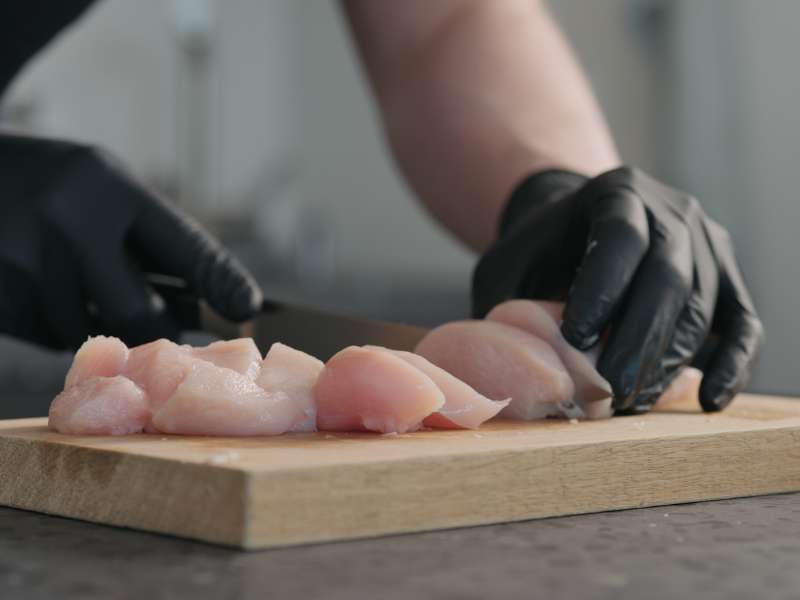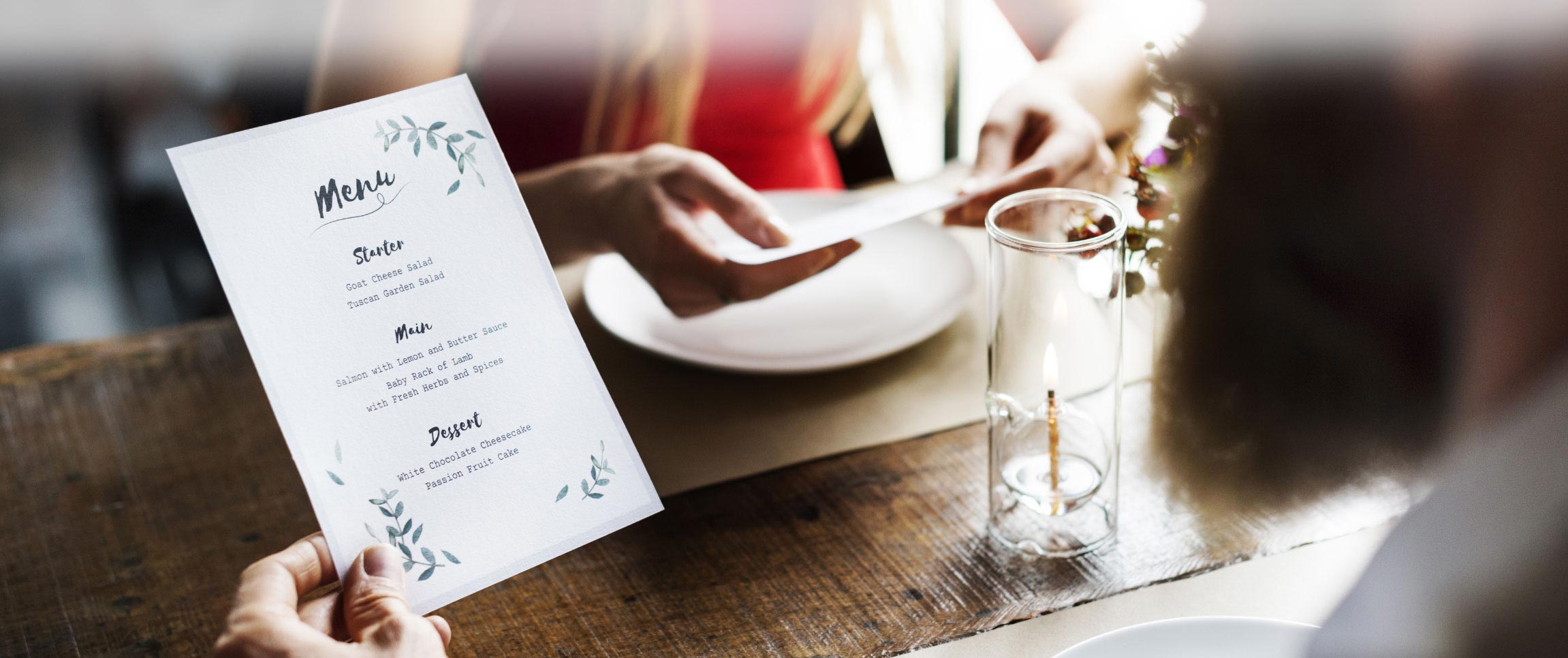A menu is one of a restaurant’s most powerful marketing tools. In addition to selling the food, the menu should reflect the brand in a way that gives guests a sense of place.
Spring and summer can be a great time to revamp existing menus with an eye toward strategic selling and thoughtful design before the rush of the holiday season begins. Whether you decide to hire a designer or design your own menu, there are a few simple concepts that can help you achieve your goals.
Your Menu is a Marketing Tool
Think about your menu as a marketing tool first and foremost. Not only should it have your food and pricing, it should also include basic, pertinent information about the restaurant, potentially including the restaurant address, web address, and hours.
Once you’ve included the basics, think about what other information will help you connect with guests and tell your story. You may want to include a list of purveyors, including farmers or specialty beverage producers you work with, to show your commitment to local or high-quality ingredients. You can increase engagement by including a QR code that directs guests to your menu online and by sharing your social media handles to encourage guests to follow you on the web for exclusive updates and offers.
Reflect Your Brand
The menu should look like it belongs in your restaurant. To establish continuity, use the same colors and fonts that are found in your logo and other marketing tools. This is the perfect time to reference your style guide if you have one. If not, consider the vibe of your restaurant overall: is it casual and sporty or sophisticated and refined? The layout of the menus and the materials you use come together to inform guests about what kind of restaurant you are. A multi-page, leather-bound book is going to evoke the feeling of a high-end steakhouse; whereas a sleek, one-page on a vintage clipboard will suggest a contemporary and relaxed concept.
Menu Engineering

Restaurant chains and other knowledgeable restaurateurs rely on the concept of menu engineering to sell more food. This practice is based on the observation that guests have some predictable habits when it comes to reading and ordering from menus. Knowing those habits and preferences can make a big difference when it comes to selling food.
Greg Rapp is an expert in menu engineering. He shares some of the basic principles at menucoverdepot.com, and we’ve synthesized them here. The four steps of menu engineering are:
- Cost: Begin by costing out every single item on your menu. Rapp suggests having one person cost the entire menu to avoid discrepancies. It’s impossible to use the other steps effectively if you haven’t taken the time to know what profit is built in to each menu item, because the concept of menu engineering relies on putting menu items in specific places based on the amount of money your restaurant makes on them.
- Categorize:
- Break up your menu into categories, such as appetizer, entree, beverage; and into sub-categories, such as meat entrees or vegetarian entrees.
- From there, Rapp identifies four quadrants (see the chart here):
- Stars—high profitability and high popularity
- Plow-horses—low profitability and high popularity
- Puzzles—high profitability and low popularity
- Dogs—low profitability and low popularity
- Rapp suggests analyzing sales for a month or so to determine where in the four quadrants each menu item falls. Once you’ve determined which type of item it is, Rapp says to locate it in that quadrant for each section of your menu. So, star appetizers will get the most focus, and thus the most sales, if they are located in the upper righthand corner of that section (this is also called the sweet spot), and so on.
- Design
- Design elements such as borders, shading, color, and decorative elements such as illustrations draw the guests' focus to those menu items, but less is more. Having too many design elements per section makes them less effective, so Rapp suggests having no more than one per section.
- List order is also important. The first few items in a list and the very last list item get the most attention, with the items toward the bottom of the list, but not last, getting the least attention.
- Using illustrations and photos can be very effective, but Rapp stresses that less is more here too: A few key photos (maximum one per page) can help sell certain menu items, but too many give the impression of cheapness. If you decide to use photography, make sure it is the best quality photography you can afford.
- Test: These principles are only valid if they are working to drive sales for your restaurant, so it’s important to continue collecting and analyzing sales data to make sure that’s the case. A menu should continue to evolve as necessary to help you achieve your sales goals.
Copywriting Matters
You’re putting in a lot of effort to make sure you menu looks great and that the items are in the best place for optimal sales. It is equally important to make sure the language you use is spot-on. If this is an area of weakness, consider hiring a copywriter to tackle the menu language on your behalf.
Menu verbiage should reflect the company vibe the same way the graphic design does. If your vibe is cheeky and clever, that should come through in the language you use. If your restaurant relies on nostalgia, tap into old fashioned language to get that across to guests.
No matter who writes the menu, take it through multiple rounds of editing to eliminate typos, which are embarrassing and unnecessary. It’s always better to find this out before going to the printer, so get as many eyes on the menu in advance to avoid finding mistakes after the fact.
Vivid descriptions can be powerful sales tools. According to a 2002 field study, descriptive menu labels increased sales up to 27%. This includes sensory descriptors like “crispy” as well as geographic or cultural terms like “Neopolitan” or “Cajun.” Sensory descriptions should give the guest insight into how the dish is prepared, not just its ingredients. This is another opportunity to reflect the values of the brand. If family is an important component of the brand, using proper nouns or titles like “Aunt Bertha’s Chili” can draw attention to certain dishes.
A few thoughtful tweaks to your existing menu can translate to increased sales, and that’s always a good thing. Just make sure to take the time to train your staff on any menu design elements that can help them create an exceptional guest experience, sell more food and/or turn tables more efficiently. A tool is only effective if your staff understands how to use it!



